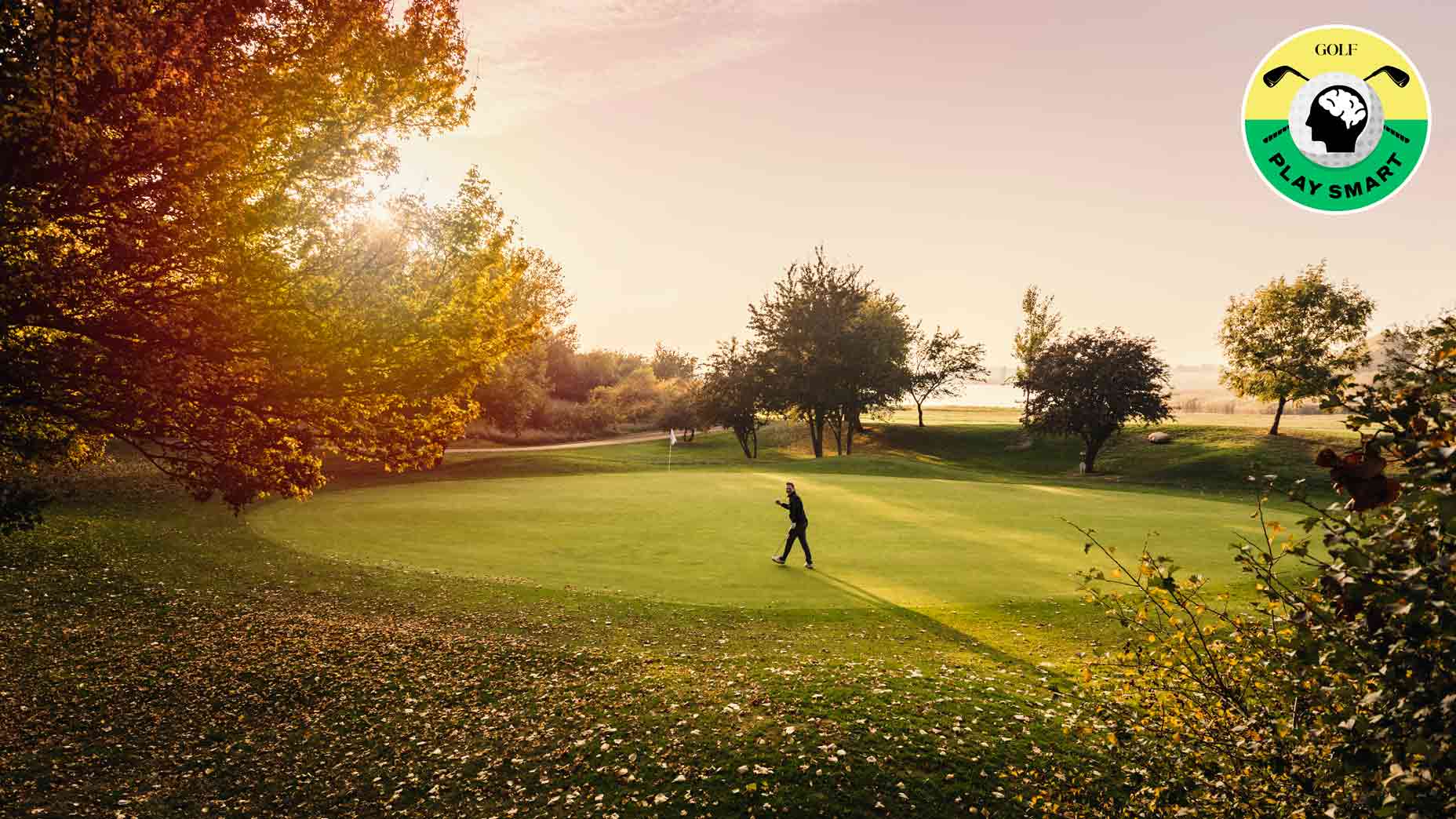Welcome to Play Smart, a regular GOLF.com game-improvement column that will help you play smarter, better golf.
In many parts of the country, the extreme summer heat is over and autumn is in the air.
You know what that means: leaf piles, pumpkin spice lattes and, yes, fall golf, which just so happens to be one of my favorite kinds of golf.
But before booking a fall tee time, there are some tips you must know — especially if you live in a place like I do, Seattle, where it’s now darker in the morning (so long, pre-work tee times) and the grass is saturated anytime it rains.
To help prepare players for the fall season, I tapped a few GOLF Top 100 Teachers for guidance. So take a look below at what some of the top instructors in the sport had to say.
How does morning dew in the fall impact your game?
Brian Mogg (Chambers Bay Golf Course): “One of the big keys to fall golf is understanding how in morning, the dew and the temperatures play a large role compared to the afternoon when it’s usually warmer and dry. Morning dew will really hurt roll and distance, meaning players should generally add one more iron to the shot. The afternoon allows for drier, firmer conditions.”
Sarah Stone (Chevy Chase Club): “Dew affects the ball and club interaction. Any water between the ball and the club reduces friction, so this will impact the direction and launch of your shot.”
Joe Hallett (Vanderbilt Legends Club): “In the rough (and longer grass around the green), the moisture will still be there, so expect a flier while hitting your wedge shots.”
Kevin Weeks (Cog Hill GC): “You should be aware that your iron shots might not spin as much when there’s dew on the ground. As moisture gets between your clubface and the ball, it reduces friction, thus not creating as much spin on the ball as in warmer months.”
Jim Murphy (Sugar Creek CC): “The dew in the morning affects the putting more than anything, since the moisture on the greens will make putts a little slower until it evaporates. Therefore, you need to adjust your speed accordingly, and then adjust again as the dew evaporates.”
So, how best to prepare for cool, damp conditions?
Mogg: “Temperature data shows that, for every 10 degrees of change in the temp, there is a 2-yard differential in shots. As mornings are cooler now (in the 30s and 40s, and then rise to the 60s or 70s), there is a 6-8 yard difference from morning to later afternoon. Combine that with wearing sweaters/vests, there’s now a 10-yard potential for yardage change, depending on when you tee off.”
Stone: “Always wipe your ball off before teeing off, and, most importantly, wipe off your clubface before you hit your shot. I see too many players taking practice swings on a dewy tee box and then address their ball without wiping off the face!”
Hallett: “Exchange a longer iron for a hybrid for a better landing or approach angle on your shots; especially on colder morning greens where the ball will roll less.”
Murphy: “If you have options while making a tee time, afternoons are better because the weather is more consistent, and there are less factors to deal with on the course.”
What equipment changes should players make in the fall?
Mogg: “One of my observations is that most golfers club themselves to their summer numbers or their best shots, then don’t readjust during the year. As temps drop lower, a good idea is to play a softer compression ball.”
Stone: “Firmer conditions can affect short-game shots; especially when chipping. So I would encourage players to use the leading edge with a lofted club to help create some turf interaction. Using the bounce on firm surfaces can create some bladed shots.”
Weeks: “A new pair of waterproof shoes is a good idea. Also, colored golf balls can help players find their ball in the leaves much easier, and adding a pair of rain gloves to the bag to help keep your hands warm and dry is also a must.”
Murphy: “When golfing in fall, the ground is firmer and the grass tends to be a little tighter, so I suggest playing a ball that spins a little more for control into the greens. Also, if you’re between a long iron and hybrid, I recommend using the hybrid, which can help you hit it a little higher and land it softer on your approach shots.”
How about course management? Any tips for the fall?
Stone: “I would suggest hitting a club shorter in to let it bounce up on the green, so spend some time putting uphill and downhill to feel the speed changing. And with the thicker rough in the fall, grab your most lofted club and get your ball back into the fairway.”
Weeks: “Be aware of the wind and how conditions are changing. Also, after the first frost, the greens tend to dry out and are firmer, so players should always allow for more roll on the putting surfaces.”
Murphy: “When playing golf in fall, some of the elements tend to make the game a little gentler on the golfer. For example, the rough is usually not as long as it is during the summer season, so driving it into the fairway isn’t as important. During hotter months, the ground tends to be a little bit firmer and tighter, as there is usually less rain, so your ball will run a little farther. Also, here in Texas during the fall, there tends to be less wind, so the course plays slightly easier because of this.”
